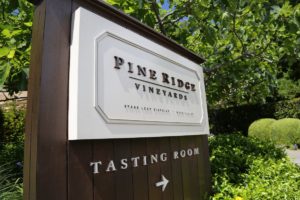
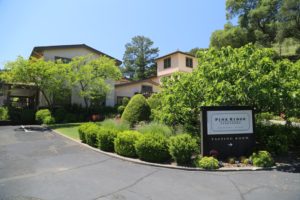
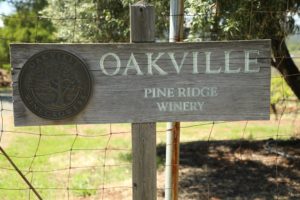 Pine Ridge Vineyards was founded in 1978 by the late Gary Andrus (died in 2009), his ex-wife Nancy (she since retired and re-married) and a group of investment partners. Gary was born and raised in the Los Angeles area and became an avid skier. At one point he was a member of the U.S. ski team for downhill skiing and from 1976 through 1979 was vice president of Copper Mountain Ski Resort in Colorado. Continuing his love of sports, in the late 1960s/early 1970s Gary founded a sports store on Higuera Street in San Luis Obispo called Mountain Sports. He sold this store in 1975, the new owners changed names then to The Mountain Air and eventually moved the store to a small shopping center on Marsh Street where it continues to operate and is often frequented by Cal Poly students and the local community. Incidentally another Napa winery owner, Gary Erickson (co-founder of Clif Family Winery) worked at this store for several years in the late 1970s.
Pine Ridge Vineyards was founded in 1978 by the late Gary Andrus (died in 2009), his ex-wife Nancy (she since retired and re-married) and a group of investment partners. Gary was born and raised in the Los Angeles area and became an avid skier. At one point he was a member of the U.S. ski team for downhill skiing and from 1976 through 1979 was vice president of Copper Mountain Ski Resort in Colorado. Continuing his love of sports, in the late 1960s/early 1970s Gary founded a sports store on Higuera Street in San Luis Obispo called Mountain Sports. He sold this store in 1975, the new owners changed names then to The Mountain Air and eventually moved the store to a small shopping center on Marsh Street where it continues to operate and is often frequented by Cal Poly students and the local community. Incidentally another Napa winery owner, Gary Erickson (co-founder of Clif Family Winery) worked at this store for several years in the late 1970s.
Gary also left his mark on the world of Oregon wine; in 1993 he founded Archery Summit Winery, a prominent Pinot Noir producer in the Dundee Hills appellation of the Willamette Valley sourcing from approximately 120 acres of vineyards. In 2002 Gary began Oregon based Gypsy Dancer Wines with his third wife Christine (who still continues to operate this Pinot Noir focused winery). Gary sold his shares in both Pine Ridge Vineyards and Archery Summit Winery in 2001.
Pine Ridge is now owned by publicly traded Napa Valley based Crimson Wine Group (CWGL), a company who owns a select portfolio of wineries in California, Oregon and Washington. Pine Ridge is their only Napa Valley based winery and is where the Crimson Wine Group headquarters are located.
Pine Ridge owns 160 acres of vineyards in five Napa Valley appellations including Carneros (3 sites), Howell Mountain (1 site), Oakville (1 site), Rutherford (1 site) and Stags Leap District (4 sites). A 2-acre block in their Oakville vineyard is used for growing a diversity of varieties which are not or are rarely grown in Napa Valley including Saperavi, a red variety native to the country of Georgia.
Beginning in early 2023, we made the initial connection needed in regard to obtaining budwood and or bareroot vines for Odessky Cherny, a Ukrainian red variety that is not yet available or grown anywhere in the United States. Once imported direct from Ukraine to Foundation Plant Services (FPS) at UC Davis, they will be quarantined for several years, followed by planting them in Pine Ridge’s Rutherford or Oakville vineyards. The first plants arrived in July 2024, and were packaged exactly as required by federal regulations including a complete absence of soil, but were unfortunately still denied by customs. Another attempt will be made again in September 2024, this time to ship cuttings, rather than full plants.
We also assisted in the logistics and accompanied two cases of 100% varietal Odessky Cherney wines from Paris to California in December 2023 after significant efforts were made (not by us) to get these wines from Kiev to Paris.
Rather than outsource the management of the vines to a vineyard management company, Pine Ridge employees their own team.
Unlike other wineries who change varieties, vineyard sources and wines, Pine Ridge strives for consistency, including sourcing from the same vineyards and blocks and producing wines from the same varieties year after year. Former winemaker Stacy Clark was with the winery from 1983 to 2008, certainly one of the longer tenures of a winemaker in the valley. Pine Ridge has only employed a handful of winemakers since its founding. Current winemaker, Josh Widaman previously was winemaker at Lewis Cellars where he crafted a number of high scoring wines including the Wine Spectator’s #1 Wine of the Year in 2016. Starting in 2023, he is overseeing a number of improvements to their cave and winery infrastructure. The original tank room will eventually be converted to a reserve cellar, housing some of their top wines.
The winery is located in the Stags Leap District, one of Napa’s gorgeous regions featuring rolling hills, valley floor vineyards and steep rugged rocky hillsides on its eastern flanks. Stags Leap District was founded as an appellation in 1989 and is one of Napa’s most prominent appellations. Several historical vineyards are located here, one of which, the nearby Fay Vineyard provided fruit for one of their neighboring wineries (Stag’s Leap Wine Cellars) whose 1973 Cabernet Sauvignon took the top honor in the historic Paris Tasting of 1976. Compared to some of Napa Valley’s other appellations, there are very few producers and wineries in the region. Furthermore, it’s not an appellation that has seen an influx of new producers in the last 10-15 years like many of Napa Valley’s sub appellations. The vineyards in this appellation are also fairly well established.


 Stags Leap District was the first viticultural area in the United States to be approved based on the distinctiveness of its soils. There are two main soils that dominate here including volcanic found along the hillsides, and river sediments found at the lower elevations which over the years have formed consistent loams that are somewhat clay-like in nature. The appellation is not large by Napa Valley standards – slightly over a mile in width and about 6 miles long.
Stags Leap District was the first viticultural area in the United States to be approved based on the distinctiveness of its soils. There are two main soils that dominate here including volcanic found along the hillsides, and river sediments found at the lower elevations which over the years have formed consistent loams that are somewhat clay-like in nature. The appellation is not large by Napa Valley standards – slightly over a mile in width and about 6 miles long.
Pine Ridge’s little slice of the Stags Leap District is tucked between two hillsides surrounded by their estate vineyards. Pine trees grow above the vineyard extending to the ridge line to the west – and were the reason why Gary and Nancy chose the name Pine Ridge, honoring their location. Visitors who are interested in walking among vines and viewing the differences in varieties can visit their two small demonstration vineyards – located right next to the south side of the parking lot. Demonstration vineyards are rare at Napa wineries and Pine Ridge has one of the best educational small vineyards in the valley. Each of these trellising systems contains a label on the end of the row – indicating the type of system, variety, rootstock and other related vine information.
For someone new to wine tasting, vineyards will generally look the same at a glance, but there are many different methods to train grape vines and it is worth a quick stop to look at this particular vineyard.
And select long term wine club members (at least 10 years of consecutive membership) will have a posted plaque with their name on the ends of certain rows or vines, both in the demonstration vineyard and in one of their adjoining primary vineyard blocks.
Contemporary Stags Leap District is primarily known for its Cabernet Sauvignon (and select other Bordeaux red varieties) and for many years it was surprising to find nearly 2 acres of two French clone Chardonnays grown on a small hillside behind the winery. At the time this was one of only several blocks of Chardonnay growing in the entire Stags Leap District. These particular clones and growing climate helped produce an intensely flavored Chardonnay which they bottled under the name Le Petit Clos. Unfortunately, those Chardonnay vines became diseased and were removed and the site was planted to Cabernet Sauvignon.
Stags Leap District Vineyards
Locked Horns Vineyard is the southernmost vineyard in Stags Leap District owned by Pine Ridge. This vineyard was established in 1992 and is planted to 6 acres of vines. A rock wall divides the property line of Stag’s Leap Wine Cellars owned S.L.V Vineyard. And on Locked Horns Vineyard eastern boundary is Fay Vineyard. Despite different ownership, these vineyards share similar soils resulting from a gently sloping alluvian fan. From this vineyard one has gorgeous views of the rocky palisades jutting out from the nearby Vaca mountains. This site is named in homage to the winemaking teams from both Pine Ridge and Stag’s Leap Wine Cellars who compare wines from each other’s neighboring vineyards each year. Rather than a competition it is a sharing of information from that year’s viticulture practices and winemaking.
Stags Crown Vineyard is the northernmost of the Pine Ridge owned Stags Leap District vineyards. This vineyard was established in 1997 and is 7 acres of vines. It is located at the corner of Yountville Cross Road and Silverado Trail and is directly across from the Oakville appellation. As a result of both its location, full exposure to the sun and the lowest trellised vines of any of their vineyards, this site produces ripe and plush wines which tend to dark fruited. The site is planted to two clones of Cabernet Sauvignon, 337 and the MR clone (from Bordeaux). This site produces the rounded and softest of their single vineyard wines.
Circle Hill Vineyard is located within eyesight of Stags Crown Vineyard. But instead of being located on the valley floor, this vineyard is on one of the coveted ‘knolls’ within the Stags Leap District. It was established in 1994 and is 7 acres of vines. Terraced vines wrap around the ‘hill’; soils here are extremely rocky. A lower block which slopes off of the hill is simply called block 2 and is arguably the best block within all of Pine Ridge’s vineyards in Napa Valley. Grapes from this block form the foundation of Fortis every year, Pine Ridge’s most premium bottling. And the views match the quality of the wine from this site; from the top there are panoramic vistas looking both south and north over the valley.
Andrus Estate Vineyard is located roughly in the center of Stags Leap District. This ‘home vineyard’ is located on the steep and terraced slopes of a horseshoe shaped hill; this is one of Napa Valley’s most unique vineyard sites. Standing behind the winery and looking up its slopes, one can almost imagine Andrus developing a ski run here. It was established in 1978 and the nearly 50 acres property is planted to 27 acres of vines. It is planted entirely to Cabernet Sauvignon separated into 16 unique blocks. And the property is also planted to one block of Malbec. Numerous exposures, terracing and steep hillside plantings, make this an intriguing and challenging site to farm. The soils are shallow and rocky. Several vents providing ventilation from the cave below are located on the hill behind the winery.
Hospitality


 Pine Ridge is open to the public by appointment; this winery is well-known based on quality wines & a national distribution; their tasting room can be busy even on slower winter weekend days. After parking or being dropped off, guests will walk by an ancient fig tree on the path to the main entrance; this was already here when Gary first looked at the property. A friendly host will then direct visitors to either the cave or the main hospitality space at the entrance for a tasting.
Pine Ridge is open to the public by appointment; this winery is well-known based on quality wines & a national distribution; their tasting room can be busy even on slower winter weekend days. After parking or being dropped off, guests will walk by an ancient fig tree on the path to the main entrance; this was already here when Gary first looked at the property. A friendly host will then direct visitors to either the cave or the main hospitality space at the entrance for a tasting.
Pine Ridge offers a variety of personalized and private experiences – check their website for the most current offerings. One of the most popular is Cellar 47 Cave Tour & Tasting, a 90-minute tour followed by a tasting of small bites prepared by their full-time in-house chef. This tour is generally geared to the lowest wine education level of the attendees and highlight a wide variety of topics ranging from vineyard management, to barrel aging, to fermentation and more. During a recent visit we were treated to mouthwatering delicacies such as a Duck Rillette Toast, Smoked Trout Gougere and a Pork Picadillo Empanada. Along with the wines, these tasty treats are certainly highlights of this experience.
The tour also allows visitors to see the remarkable original glass sculpture by prominent artist Dale Chihuly, titled, Siam Gold Persian Set with Lamp Black Lip Wraps. This delicate piece is actually 22 separate pieces (although one piece was broken during a cleaning session, but visitors will not notice its absence). Gary acquired this piece during the 2000 Napa Valley Wine Auction. Dale is a prominent artist who perhaps is most famous for his glass ceiling in the entry of the Bellagio Hotel in Las Vegas.
This seated tasting is held in their plush Cellar 47 Lounge within the confines of the 32,00 square foot cave (the lounge was formerly used for barrel storage and named in honor of their total vineyard acreage in the Stags Leap District). The tasting focuses on select Cabernet Sauvignon wines from their vineyard sites including a taste of FORTIS, their flagship Cabernet Sauvignon.
Incidentally this was the first cave ever drilled by Glen Ragsdale Underground Associates, a prominent wine cave excavator based in Napa Valley who since went on to drill more then 50 winery caves – most of which are located in Napa Valley.
Other tastings include a seated tasting in their main tasting room or a private tasting inside the Hillside Lounge. And by prior appointment, guests can picnic and enjoy bottle service on the grounds under a shade cloth and a trellis next to the demonstration vineyard (weather permitting). A minimum bottle order applies. Other than the walkway leading to the table, one is surrounded by grape vines on all sides.
Select wines
Whites
As of our latest update to this review, remarkably Pine Ridge produces approximately 150,000 cases of a wine a year called Chenin Blanc + Viognier. This reasonably priced wine is usually approximately 80% Chenin Blanc and 20% Viognier. The Chenin Blanc comes from where the few Napa producers of this variety often source their grapes from – Clarksburg. Very few Napa Valley producers source from Napa Valley grown Chenin Blanc simply because there isn’t much planted. As of 2023 according to the Napa County Crop Report, there are approximately 20 acres of Chenin Blanc planted in Napa Valley; this has grown slightly from the 2017 Napa County Crop Report which listed merely 7 acres. And their Viognier comes from Lodi. Due to the large scale of this production, this wine is not made at Pine Ridge Winery. It is available at a reasonable price point and is well distributed nationally and is often found in larger wine retail and grocery stores.
The 2016 Carneros Collines (meaning hills in French) Vineyard Chardonnay went through primary fermentation using non-inoculated yeast (indigenous) and was allowed to go through full secondary fermentation (delayed until spring by keeping the wine cold). This wine was fermented and aged in oak barrels (50% new). Rather than being supported by standard metal racks (the Peterson pallets, named after Dick Peterson, who invented these and donated them as his gift to the wine industry), the Pine Ridge barrels rest on Oxo rack rollers. And instead of using a stainless-steel rod to stir the lees in the barrel, the barrels are simply turned-on rollers allowing the wine to mix with the lees – essentially using a nontraditional technique for battonage.


 As expected, the wine is noticeably dark golden in the glass leading to a bouquet with richly layered aromatics including honeysuckle and an orange/lemon zest complemented by dessert spices. The palate is layered, rounded and creamy in its textural feel. This wine certainly has weight, but its weight is balanced nicely by bright and lively fruit flavors including nectarine and citrus – anchored by a refreshing acidity (but not tart). Features a very long finish and drinks well by itself.
As expected, the wine is noticeably dark golden in the glass leading to a bouquet with richly layered aromatics including honeysuckle and an orange/lemon zest complemented by dessert spices. The palate is layered, rounded and creamy in its textural feel. This wine certainly has weight, but its weight is balanced nicely by bright and lively fruit flavors including nectarine and citrus – anchored by a refreshing acidity (but not tart). Features a very long finish and drinks well by itself.
Reds
Napa Valley Cabernet Sauvignon
The 2021 Pine Ridge Vineyards Napa Valley Cabernet Sauvignon was crafted from grapes growing on both estate properties as well as from growers in Napa Valley. This wine is deep ruby with an amaranthine color, especially noticeable on the rim of the glass. The bouquet is intensely fruited in its youth (we tasted this wine less than 2 years post vintage) offering aromas of blackberry, boysenberry and mulberry along with darker baking spices, chocolate, Graham cracker and toasted cedar. The palate delivers opulent fruit flavors of dark plum, blackberry and boysenberry. The finish lingers with dusty, rounded and already well-integrated tannins, a warmth of alcohol, crushed peppercorn and other dark woodsy-like spices. This is high octane savoriness.
Black Diamond
The 2020 Pine Ridge Black Diamond is a wine bottled in homage to Gary and his passion for skiing. This in is made with 95% Red Mountain grapes and 5% Malbec from Napa Valley. This wine is deep ruby in color; the bouquet is sweetly perfumed including of rose petals and violets along with notes of stewed prune and chocolate. The palate offers a wide swath of flavors including Santa Rosa plum, dried cherry, red licorice and pomegranate. The finish features rounded and nicely integrated tannins for such a youthful wine (we tasted 2.5 years post vintage) along with a persistent note of dried tobacco leaf and a dusty character. This bottling also shows decent acidity.
Circle Hill
The 2019 Pine Ridge Circle Hill Cabernet Sauvignon is sourced from one of the estate vineyards in the Stags Leap District. This wine is deep ruby; the bouquet offers a diversity of scents including violets, sage, olive, dust and cedar along with boysenberry and blackberry. As the wine continues to evolve it reveals aromas of milk chocolate and mocha. This bottling offers plenty of fruit across the palate including of boysenberry, dark plum and cherry. The finish is red-fruited, lingering with light gravelly-textured tannins. We wrote seamless in our notes to describe its overall character. It also shows as slightly savory.
Stags Leap
The 2013 Pine Ridge Vineyards Stags Leap Cabernet Sauvignon is 100% varietal; this wine is noticeably dark in the glass, even under less than optimal lightning conditions. The wine reveals an opulent and appealing bouquet focusing primarily on darker fruit including ripe blackberry and black cherry. It shows a depth and intensity on the finish that we have often found in Napa red wines from this particular vintage. It is well layered showing plum and dark currant and is juicy, with good acidity, plenty of flavor and robust tannins which linger for some time. These tannins still feel young even 5 years after the vintage date at the time of our tasting. There is loads of life still left in this wine.
In tasting through a select number of their older single vineyard Cabernet Sauvignon bottlings, we noticed several threads of consistency throughout these wines. First, their superb balance, even in their youth and an accompanying bright acidity.
Howell Mountain
 The 2021 Pine Ridge Vineyards Howell Mountain Cabernet Sauvignon is deep ruby and totally opaque; this wine offers a Napa Valley aromatic opulence that is hard to resist. Its aromas are ripe, fresh and layered and include blackberry, Coral cherry at the peak of its ripeness, boysenberry, mulberry and dark plum accompanied by dried rose petals. Favorable barrel influences complement the fruit including of dark chocolate, vanilla, cinnamon stick, clove and Graham cracker. The palate is dark fruited with a pronounced savory component that runs the length of the palate. It offers flavors of dark plum, bramble, boysenberry, blackberry and dried herbs including sage. Its texture is memorable, featuring chewy, gritty, broadly coating and firmly gripping tannins which far outpace the fruit at this age on the finish. Their persistent dusty presence is vividly felt. Juicy. Earthy. High octane. 15.5% alcohol. In its youth, this wine would pair well with a well-marbled medium rare cut of Wagyu steak and a BBQ. This wine was aged in 75% new French oak barrels for three months and then the final blend was created; total élevage was 26 months..
The 2021 Pine Ridge Vineyards Howell Mountain Cabernet Sauvignon is deep ruby and totally opaque; this wine offers a Napa Valley aromatic opulence that is hard to resist. Its aromas are ripe, fresh and layered and include blackberry, Coral cherry at the peak of its ripeness, boysenberry, mulberry and dark plum accompanied by dried rose petals. Favorable barrel influences complement the fruit including of dark chocolate, vanilla, cinnamon stick, clove and Graham cracker. The palate is dark fruited with a pronounced savory component that runs the length of the palate. It offers flavors of dark plum, bramble, boysenberry, blackberry and dried herbs including sage. Its texture is memorable, featuring chewy, gritty, broadly coating and firmly gripping tannins which far outpace the fruit at this age on the finish. Their persistent dusty presence is vividly felt. Juicy. Earthy. High octane. 15.5% alcohol. In its youth, this wine would pair well with a well-marbled medium rare cut of Wagyu steak and a BBQ. This wine was aged in 75% new French oak barrels for three months and then the final blend was created; total élevage was 26 months..
The 2015 Pine Ridge Vineyards Howell Mountain Vineyard Cabernet Sauvignon (from their 9-acre Alta Vineyard at an elevation of 2,200 feet) offers an intriguing bouquet; showing some savory characteristics with hints of cedar, dark chocolate, clove and Asian spices. This bottling is nicely balanced with a noticeable mouthwatering acidity. It offers more dark fruit on the palate than red. The finish is dusty and earthy featuring both wood and grape tannins. The darker spices on the bouquet also show on the finish including notes of black pepper.
FORTIS
FORTIS (Latin for strength) is a selection by their winemaker who chooses only the top percentage of the best vineyard blocks across their vineyard portfolio with the wines often experiencing slightly extended oak aging time. This wine is not made every year. The 2015 Pine Ridge Vineyards FORTIS is ruby/purple in the glass showing dark fruit on the bouquet complemented with dark spices including cedar notes and cigar/tobacco leaf. Full-bodied with a noticeable intensity on the palate, it offers powerful fruit including blackberry along with black licorice with robust but not overly grippy tannins which continues to persist for some time. Despite its more muscular stature, this wine is balanced and has very good acidity.
—
Not counting their sizable Chenin Blanc production, Pine Ridge is a medium to large winery (for Napa Valley standards), producing around 40,000 cases annually as of our latest update to this review.
For more information, to schedule a tasting and or to join their mailing list or the Appellation Society Club Membership, which offers a healthy number of perks including free use of their grounds for picnics and complimentary tastings at other wineries owned by Crimson Wine Group, visit: www.pineridgevineyards.com
Exterior
Cave/Hospitality
The Mountain Air, San Luis Obispo
CRIMSON WINE GROUP PORTFOLIO OF WINERIES
We have visited and tasted at the following physical winery/hospitality spaces owned by Crimson Wine Group, although ultimately, we ran out of energy to take tasting notes for all the wines we sampled.
Archery Summit in Oregon’s Willamette Valley, focuses on Pinot Noir and was founded by Gary Andrus in 1993 – he was attracted to the Dundee Hills sub appellation because it reminded him of growing conditions in Burgundy, France. Dundee Hills is one of the more coveted parts of Oregon’s wine country for growing exceptional Pinot Noir.
Grapes are sourced from not only their own estate property but also from select neighboring appellations. The winery is situated on top of a hill affording visitors exceptional views on clear days and is only a short drive from both the towns of Dundee and Newberg. Tastings are held either indoors in a small hospitality room, in the cave (which has some similarities to the hospitality portion of Pine Ridge’s cave) or weather permitting outside. Since our first visits, Archery Summit has remodeled and expanded their tasting room. Overseen by Heliotrope Architects, the tasting room is now 1,800 square feet. Weather permitting, guests can enjoy both the wines and the views from the outside terrace.
Chamisal Vineyards (pronounced as sham-isal) is located in San Luis Obispo’s Edna Valley, one of the cooler regions in California for growing wine grapes but typically with a long growing season. They focus on growing and producing exceptional Chardonnay, Pinot Noir and Syrah. Loads of vineyard history as it relates to Edna Valley. They were the first winery to plant vines in Edna Valley in 1973. Today their vineyards are farmed sustainably, and all winery water used is recycled among the vineyards.
The name come from the native Chamise plant which grows on the property. The tasting room is located about 1/4 mile north of where the wines are made. Tastings are either held inside or outside near the vineyards. Only about a 15 minute drive south of downtown San Luis Obispo. And of note, the wine program at California Polytechnic State University has produced wines from Chamisal Vineyards before and used part of their production space to produce all Cal Poly labeled wines prior to their own state of the art winery opening on campus in 2020.
Double Canyon Winery was started by Crimson Wine Group in 2007 (as opposed to acquiring existing wineries); the winery opened in 2017 (no vineyards on site). It is located about a 10-minute drive from Benton City or a 15-minute drive from Richland in eastern Washington – not far from the Red Mountain appellation. The winery and hospitality space seemingly are in the ‘middle of nowhere’ – with lots of empty land around (dry desert-like looking landscape). The winery is sizable; initially the plan is to produce up to 50,000 cases a year but there is the space to grow production if needed – their focus is on Cabernet Sauvignon. Their flagship vineyard which was developed from scratch is the 90-acre Double Canyon Vineyard in the Horse Heaven Hills; this site was previously planted to wheat is and located relatively close to the Columbia River.
Wines are available by the glass or bottle or visitors can choose a flight. Tastings are sit down at one of several tables in the hospitality room. Windows allow views into the winery and barrel room. Tons of parking.
Malene Wines are known for their rosé wines and popup tastings; when parked at the winery, they are open for tastings certain times on Friday through Sunday in a 1969 restored and modified silver airstream with a home base in the Edna Valley about a 1/4 mile south of the Chamisal Vineyards tasting room. However, this airstream trailer often makes road trips – ‘popping’ up in select cities for tastings – attracting well heeled, young and beautiful people.
The name Malene roughly takes its name after the gem tourmaline – which can exhibit a pinkish hue depending on its origin. Founded in 2016 with their first vintage of the Malene rosé – the fruit sources for their wines are from Santa Barbara and Paso Robles on California’s central coast. While known for rosé, they also produce several other lighter style non rosé wines. The focus is on Provençal style wines using techniques that are used in Provence, France including whole cluster pressing, cold and slow fermentation and post fermentation, sur lee aging with twice a week battonage.
– On the Road
– In its Native Habitat
Seghesio Family Vineyards based in Healdsburg, Sonoma County is known for their Zinfandel wines and a rich history dating back to their founding in 1895. Edoardo Seghesio (originally from northwest Italy) planted the first vines that year at the family ‘Home Ranch’ in Alexander Valley. Over the years the family acquired a number of special vineyard sites – many of them quite historic including their Chianti Station Vineyard – home to the oldest Sangiovese in the entire country, with the oldest vines dating to 1910.
The site of the winery and hospitality center was originally home to Scatena Brothers Winery. The Seghesio’s purchased this property in 1949 as a site to satisfy their increased production at the time. The winery is located mere minutes from downtown Healdsburg (a cute town built around a central plaza – full of tasting rooms, restaurants and boutique shops). The winery grounds include a bocce ball court and tables for tasting outside (weather permitting) – with wines served either by the bottle or by the glass. Or tastings are hosted inside at the wine bar. The Seghesio family sold to Crimson Wine Group in 2011.
Seven Hills Winery was one of the early vineyard estates in Walla Walla, Washington having been founded in 1988. Long known for their Cabernet Sauvignon and Merlot. Founder and winemaker Casey McClellan grew up in eastern Washington and was raised by a farming family. He planted his first grapes in the region in the early 1980s – certainly one of the vineyard pioneers in Walla Walla.
The tasting room is located in a historic building a few blocks from the center of Walla Walla about a 4-hour drive from either Portland or Seattle or a short drive from the Walla Walla Airport (ALW). Parking is curbside along nearby side streets. The Whitehouse-Crawford building was originally constructed as a wood mill in 1904 and remnants from this old building can still be seen including an old wooden water tower on top of the building. The property underwent a major restoration in 2000. Several tasting flights are offered – enjoyed at the wine bar or seated at one of several tables.
The Estates Wine Room, Seattle WA (closed as of August 2019, we keep these photos here for historical reference purposes)







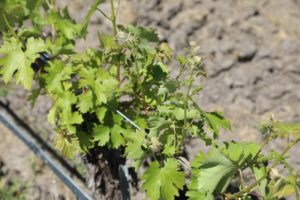
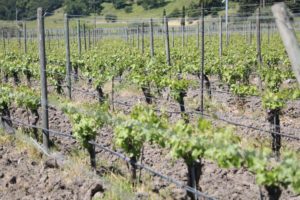


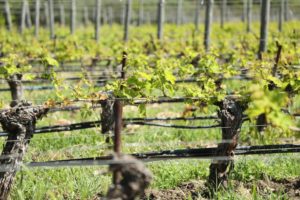
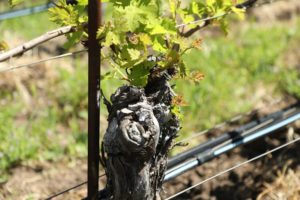







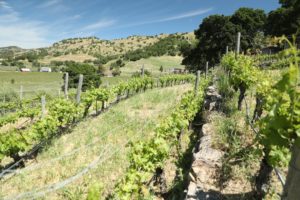

























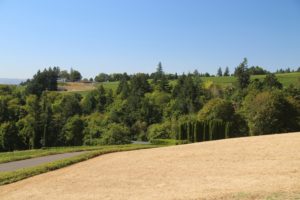






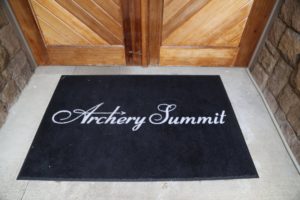


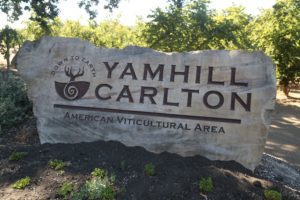

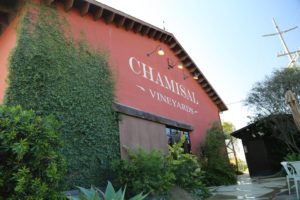





















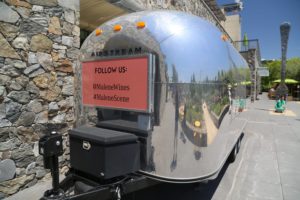



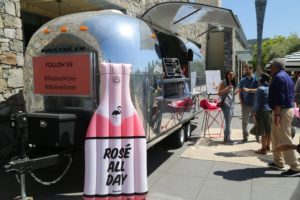

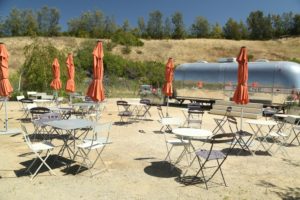





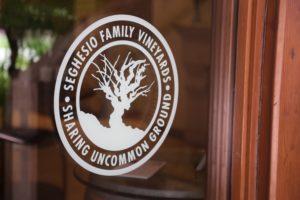



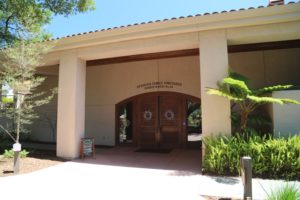




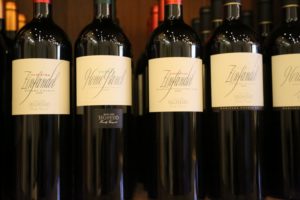


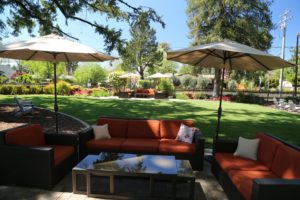





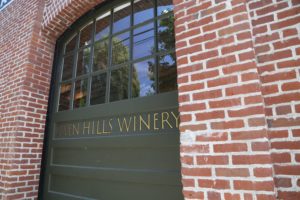


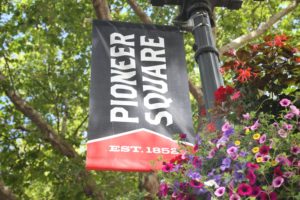


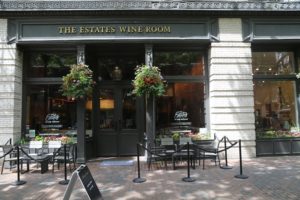
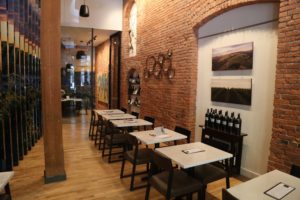

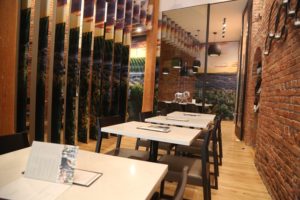

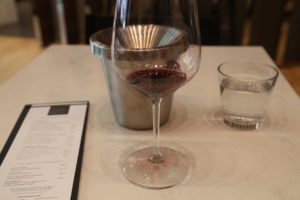
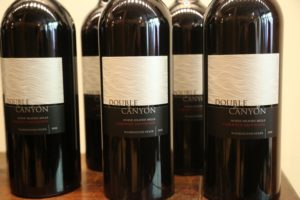

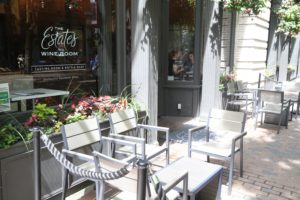
I just opened a 2013 Cab out of my cellar and it was amazing. Hope to visit in September
George – 2013 was a very good year in Napa, a robust vintage that needed some time to come around – in general, they are drinking very nicely now!